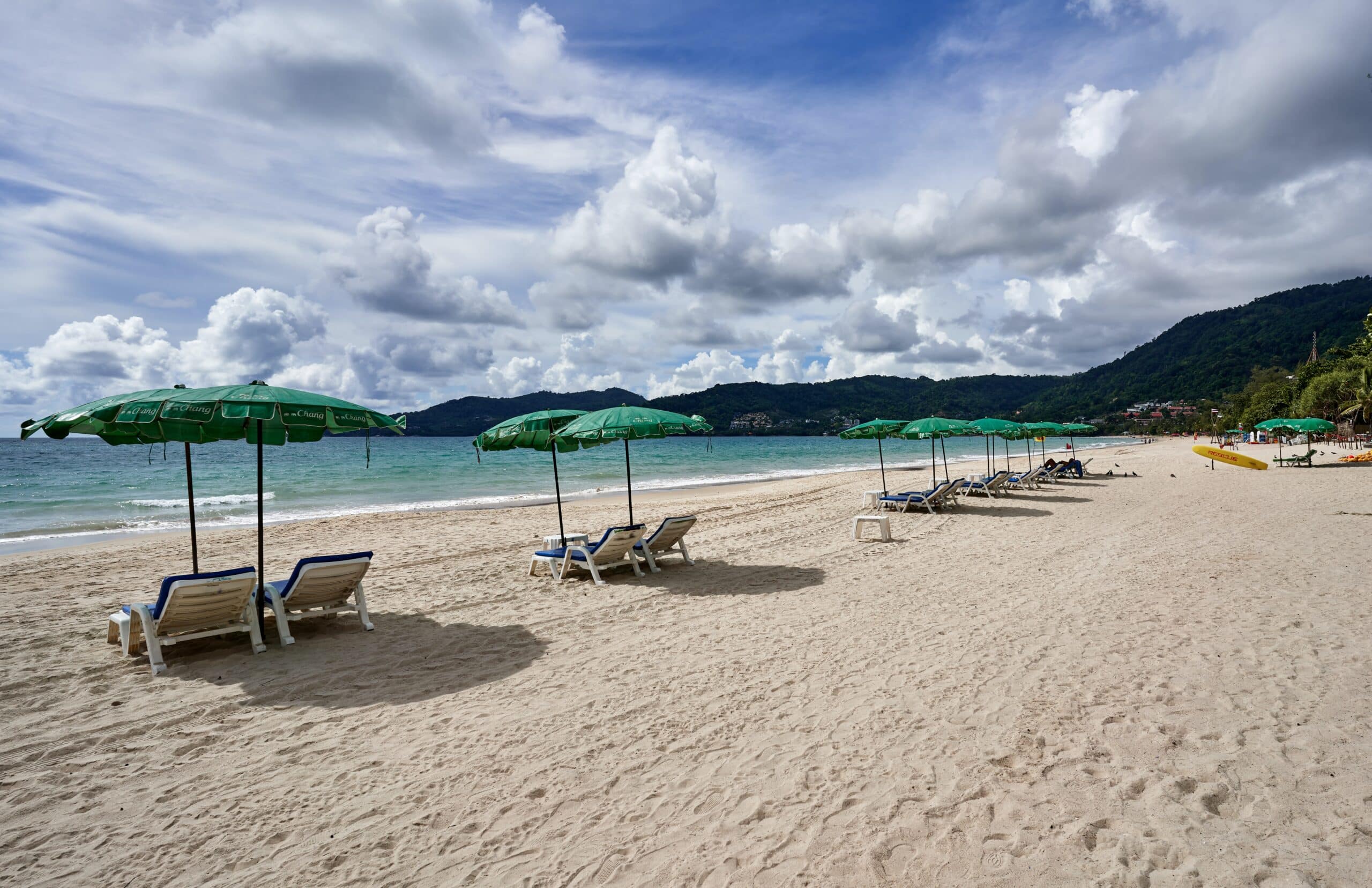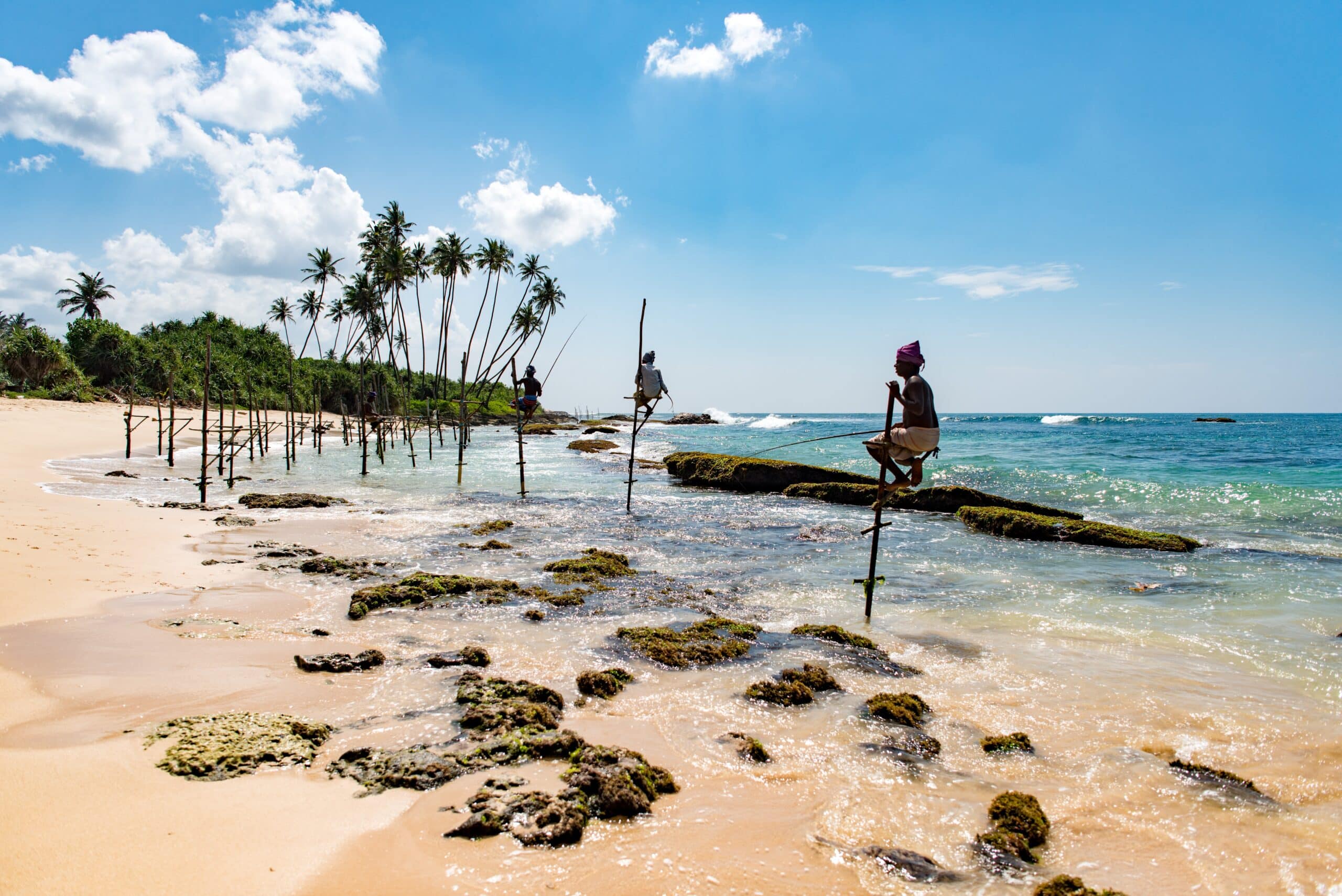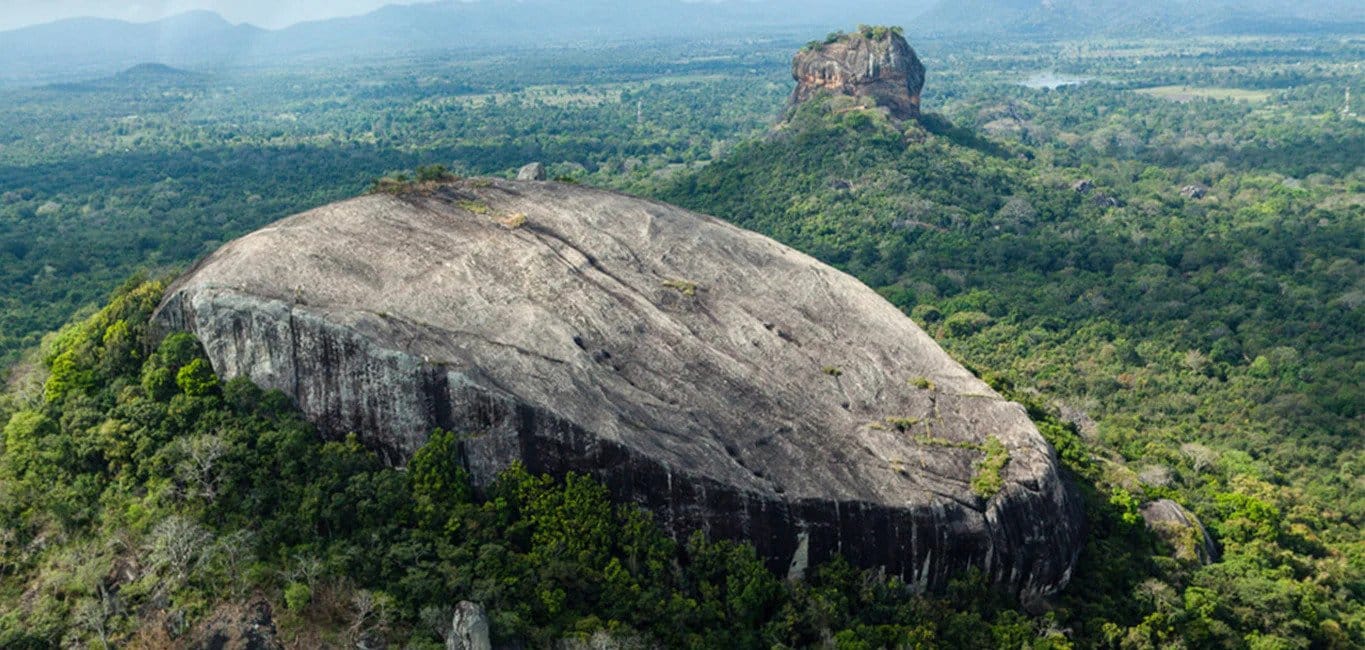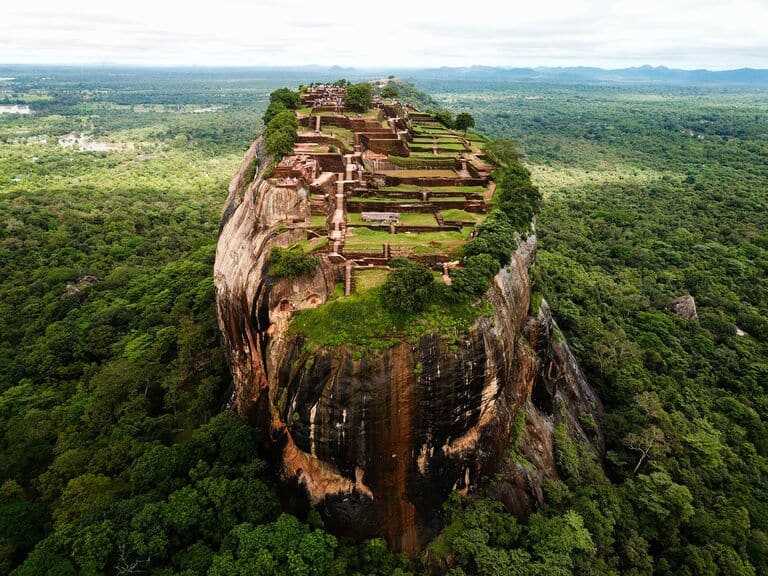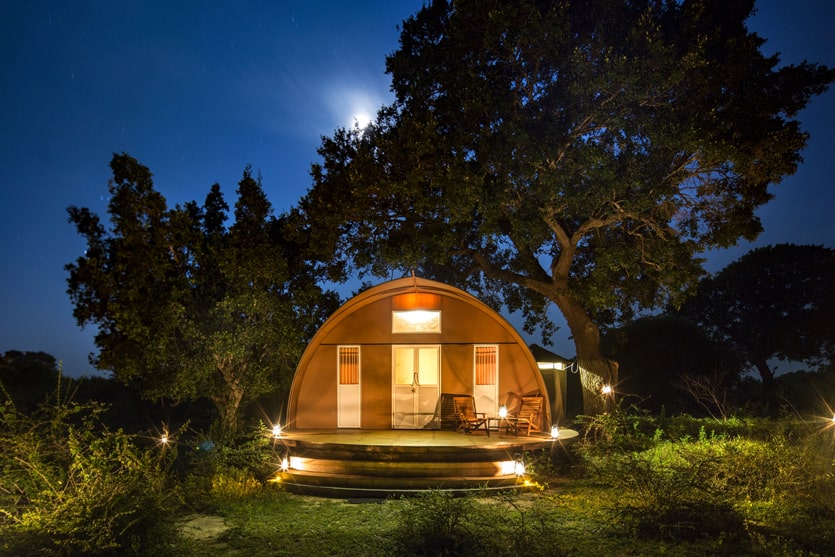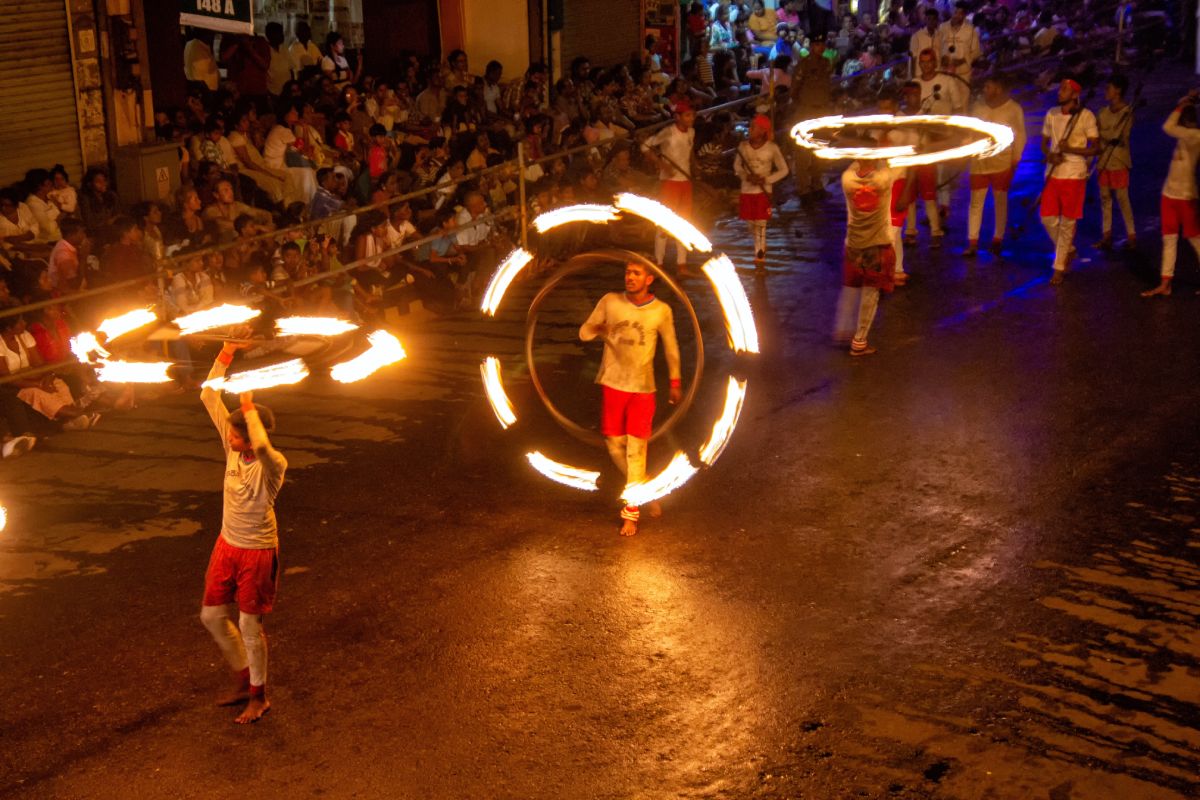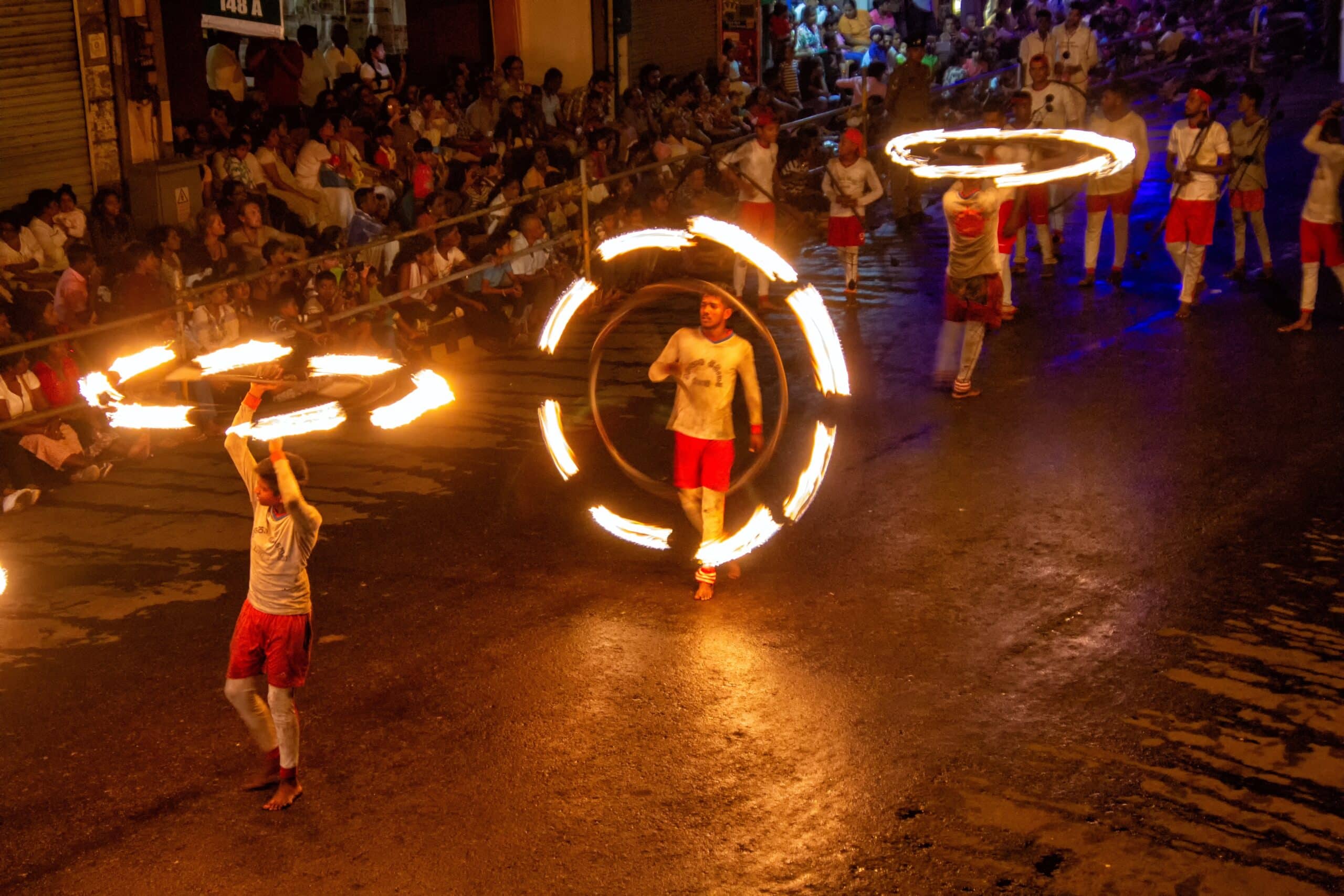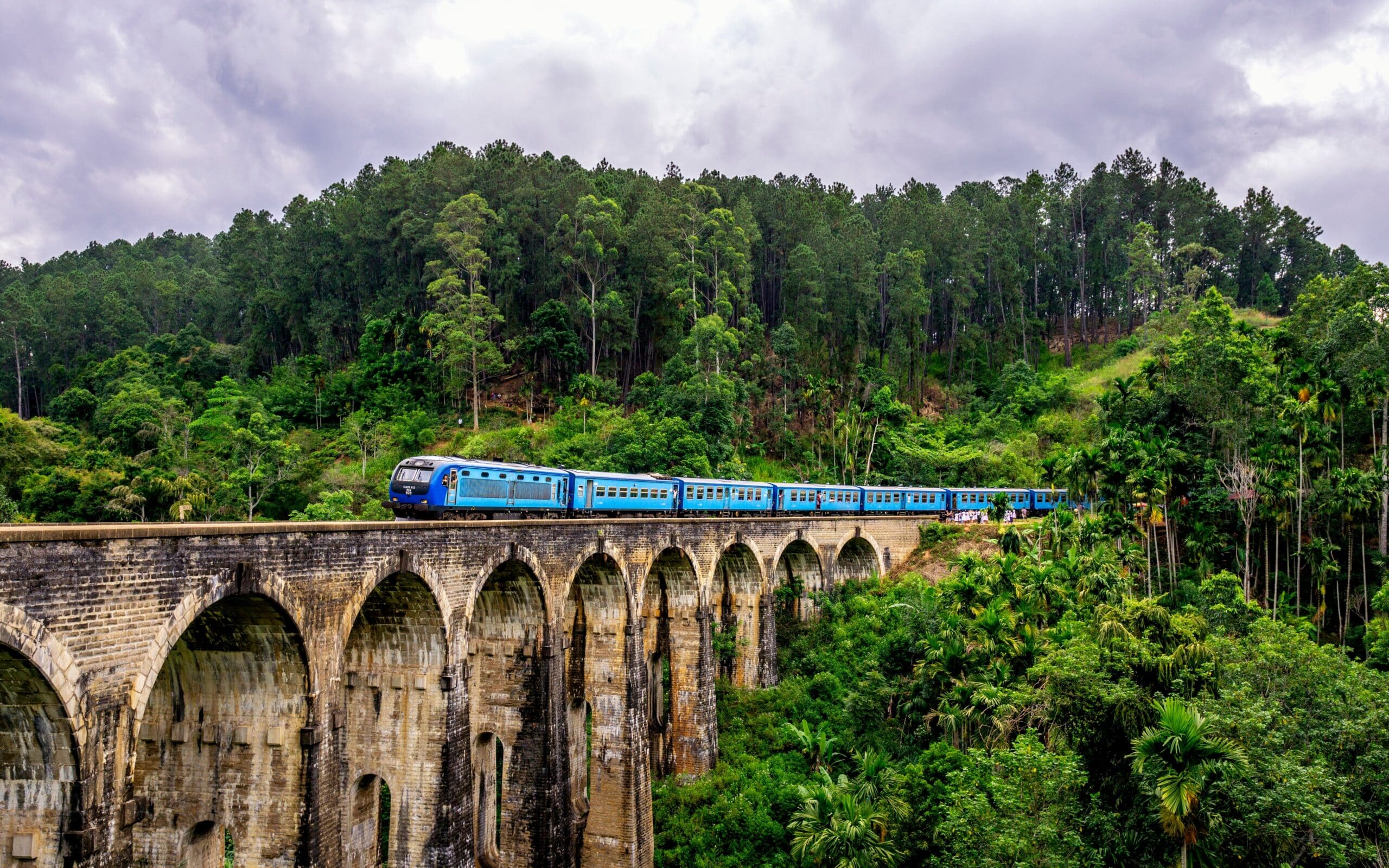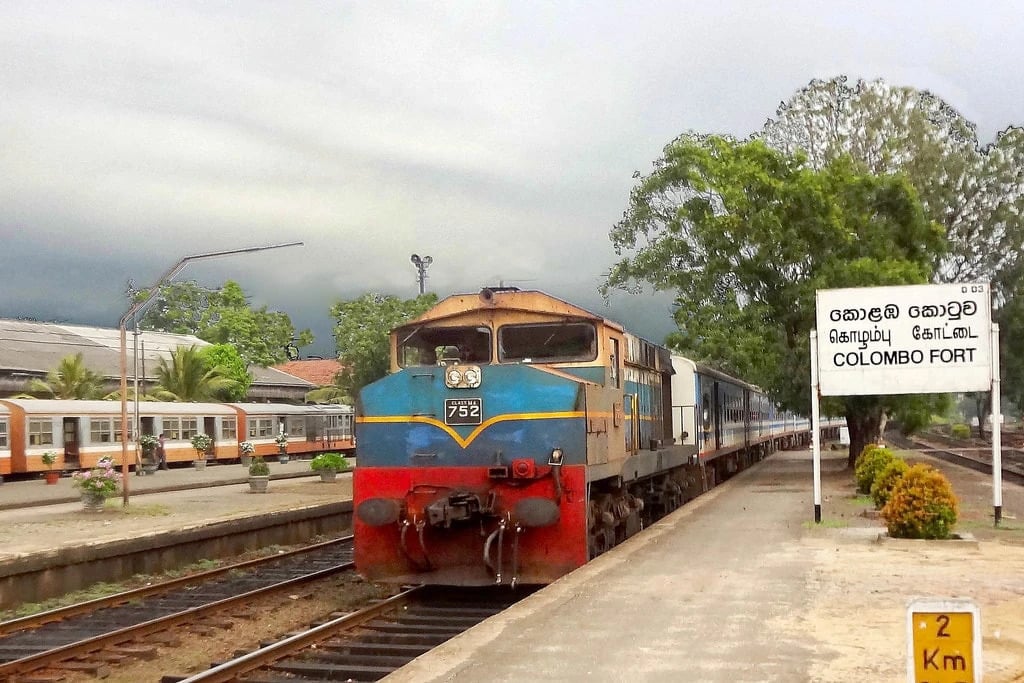- Colombo fort railway station
- Maradana railway station
- Polgahawela railway station
- Peradeniya Junction railway station
- Hatton railway station
- Nanu Oya railway station
- Pattipola railway station
- Idalgashinna railway station
- Haputale railway station
- Demodara railway station
- Badulla railway station
- Kandy railway station
- Matale railway station
- Ukuwela railway station
- Wattegama railway station
- Kurunegala railway station
- Anuradhapura railway station
- Jaffna railway station
- Trincomalee railway station
Train is one of the best transport method in Sri Lanka. Every should try this. There are lot of railway stations in Sri Lanka.
Colombo fort railway station

The Fort railway station in Colombo, Sri Lanka, is an important rail hub. Sri Lanka Railways serves the station, with multiple intercity and commuter trains passing through each day. The principal rail gateway to central Colombo, Fort Station is the final stop for most intercity trains in the country. The current Fort Station was built in 1917 as a new Colombo central station. This is built in the same style as Manchester Victoria station. The station was constructed on land that had previously been recovered from the Beira Lake. Fort Station is in the centre of the city, close to the intersections of the A1 and A4 roads and adjacent to Colombo Fort and Pettah. The station gives access to Colombo Fort’s companies and offices, as well as Pettah’s markets. Maradana Station, Colombo’s other main train station, is a few kilometers distant from Fort Station.
In addition to connecting to the several trains that pass through the station, Fort Station also connects to bus services via the Central Bus Stand in Pettah. The city terminal for the Airport Express, Colombo Secretariat Station, is located to the west of the station, with no direct pedestrian link.
Maradana railway station

Maradana Station is in Maradana, between the Maradana Railway Yards and the Elphinstone Theatre. Maradana Station is a few kilometers from Colombo Fort Station. The ticket office, waiting room, and Sri Lanka Railways offices are all housed in a two-story structure at Maradana Station. The platforms are reached via a footbridge. The main structure is designed in the style of British colonial architecture.
A facility in Maradana serves as the railways’ centralised traffic control (CTC) for the Colombo area. Approximately 290 trains pass through the CTC each day. The Main line, which connects to numerous other main routes in Sri Lanka’s railway network, serves the station from the north-east. The Kelani Valley Line, which runs to the south-east of the station, connects Maradana to several other parts of Colombo. The Coastal line, which connects Galle and Matara, serves the station to the west. Maradana Station is the final stop for most of these Coastal-line trains. Within the Colombo city, Maradana station serves as a commuter train hub.
Polgahawela railway station

The Polgahawela Junction railway station is an important junction station in Sri Lanka’s North Western Province, located in the Kurunegala District. At an elevation of 74.39 meters (244.1 feet) above sea level, it is the 34th railway station on the Main line, located 73.83 kilometers (45.88 miles) from Colombo Fort Railway Station. The station is in the heart of Polgahawela and serves as a major junction point for two railway lines, one from Sri Lanka’s upcountry and the other from the country’s north.
- Kandy, Matale, Nawalapitiya, and Badulla are all connected by the Main Line.
- The Northern Line connects Anuradhapura, Jaffna, and Kankesanturai, as well as all other northern lines.
All local and long-distance trains on the Main Line, Northern Line, Trincomalee Line, and Batticaloa Line stop at the station, which also acts as a terminus for some commuter trains. The station is not served by intercity express trains.
Peradeniya Junction railway station

Peradeniya Junction is a railway station in Sri Lanka located between Kathaluwa and Koshinna on the main railway route. It is the 45th railway station on the Main line, roughly 115 kilometers (71 miles) from Colombo Fort Railway Station, and is located at an elevation of 476 meters (1,562 feet) above sea level. It connects the Main Line, which goes from Colombo to Badulla, with the Matale Line, which runs from Peradeniya to Matale through Kandy, on Sri Lanka Railways’ network. The station serves as a stop for the majority of long-distance and local trains.
Hatton railway station
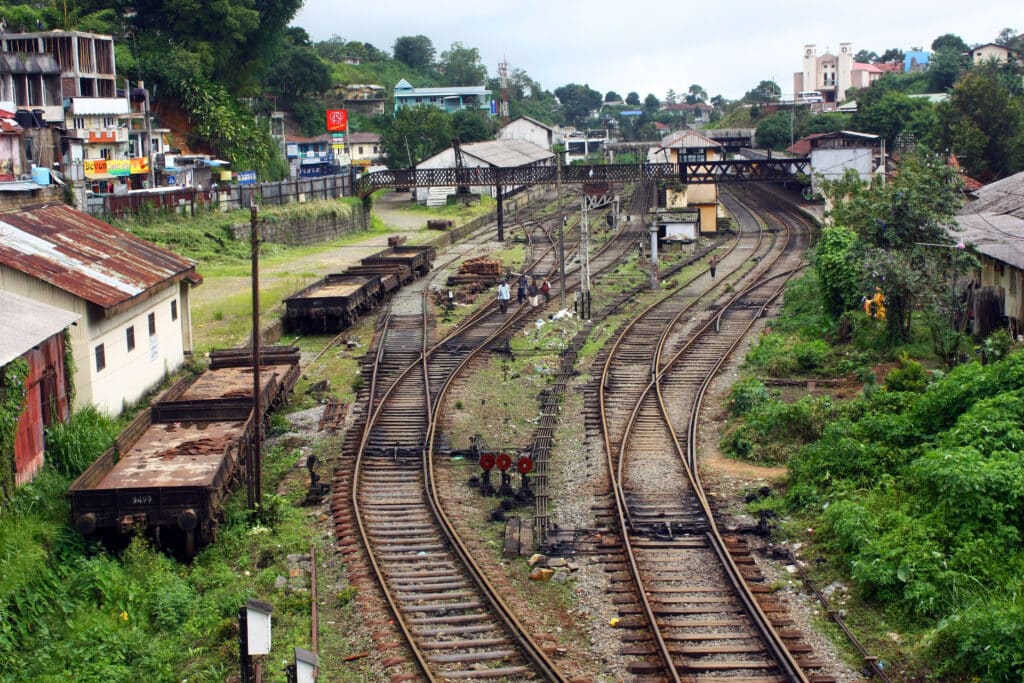
Hatton Station is a station on Sri Lanka’s Main (Colombo-Badulla) railway line. It is located between the railway stations of Rozella and Kotagala. At an elevation of around 1,262.5 m (4,142 ft) above sea level, it is 173.06 kilometers (107.53 mi) along the railway line from the Colombo Fort Railway Station. Hatton is the final stop on the main line, and the station handles a total of twelve trains every day. Hatton railway station is the busiest in the Nuwara Eliya District and the Central Province’s second busiest railway station. During the pilgrimage time to Adam’s Peak (Sri Pada), the station sees around 1 million passengers. For visitors/pilgrims to Adams Peak, the station has a big waiting room placed outside of the station. Only during the pilgrimage season is this facility open. A combination railway-bus service for pilgrims is also managed by the Sri Lanka Transport Board.
Nanu Oya railway station
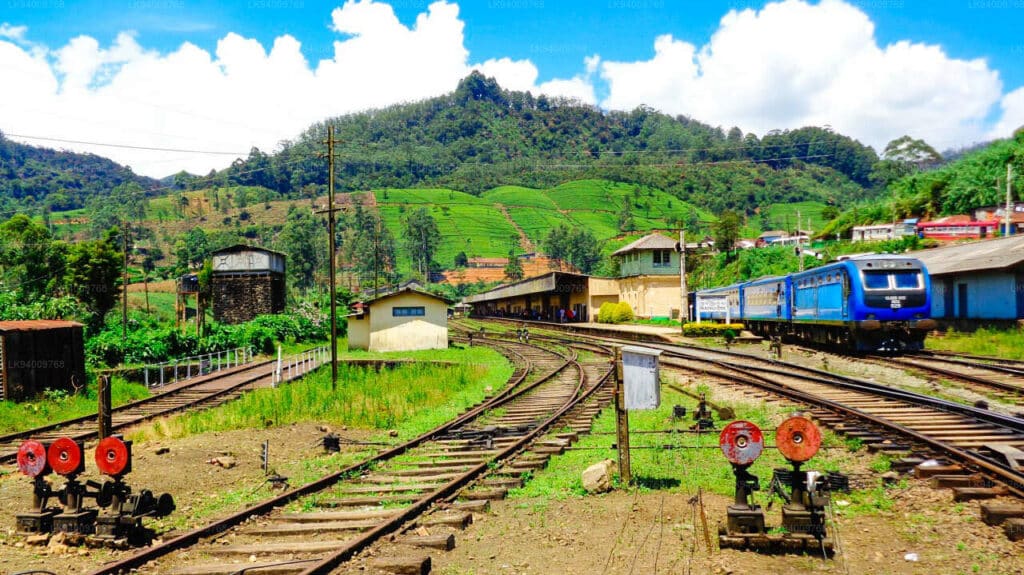
Nanu Oya is the 63rd station on the Main Line, located 206.9 kilometers (128.6 miles) from Colombo. The station is served by all trains, including the Podi Menike and Udarata Menike express trains. The Udupussallawa small gauge railway line connected Nanu Oya with Ragala via Nuwara Eliya, and the station served as a junction and branching point. The railway line was extended from Nanu Oya to Bandarawela in 1893, and when the Udupussallawa railway line was built in 1903, the station became a junction point. Due to little traffic, the government decided to stop the Udapussellawa railway in 1948, and the tracks were dismantled entirely.
Pattipola railway station
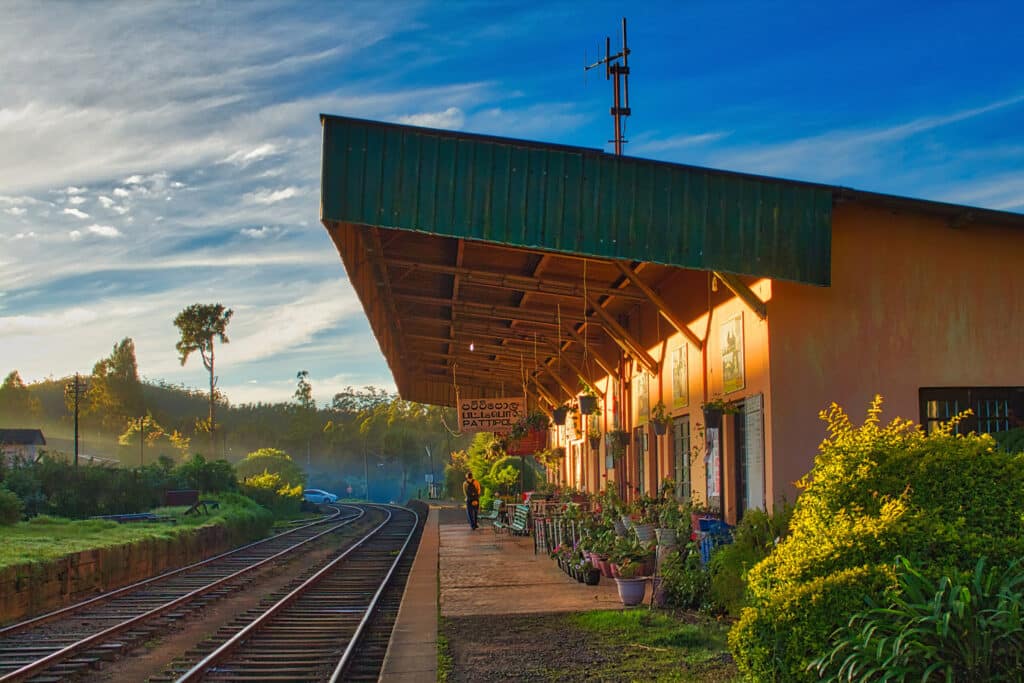
Pattipola railway station is 224 kilometers (139 miles) from Colombo and is the 62nd stop on the Main Line. With a height of 1,897.5 meters (6,225 feet) above mean sea level, it is Sri Lanka’s highest railway station. The station has one platform and a side loop on a second track. The station serves all trains on the Main Line, including the Podi Menike and Udarata Menike fast trains.
Idalgashinna railway station

Idalgashinna Railway Station is located between Haputale and Ohiya railway stations in Badulla District, Uva Province, and is the 68th station on the Main Line and the sixth highest railway station in Sri Lanka. It’s 8 kilometers (5.0 miles) west of Haputale, at an elevation of 1,615 meters (5,299 feet). After the route was extended from Nanu Oya railway station to Haputale in 1893, the station was erected. On the Colombo-Badulla railway line, this is the 68th stop. The railway station is situated on a hilltop that separates Sri Lanka’s southern and eastern regions. As a result, the environment is both foggy and clear at the same time. Rainwater from the Idalgashinna railway station accumulates in front of the roof and flows to the Mahaweli river valley, while water pouring from the back of the roof flows to the Walawe river valley, depending on the location.
Due to the soil sloping away steeply on both sides, the 5 ft 6 in (1,676 mm) wide gauge main line between Haputale and Idalgashinna is recognized as having a very attractive perspective. On the northern side of the station, the view stretches beyond Boralanda and Welimada up to Udupussellawa and Hakgala, while on the southern side, Beragala and the Udawalawa reservoir are clearly visible. The express trains Podi Menike, Udarata Menike, and Night mail train, as well as all local trains travelling on the main line, serve it. Between the Ohiya and Idalgashinna railway stations, there are 14 tunnels.
Haputale railway station
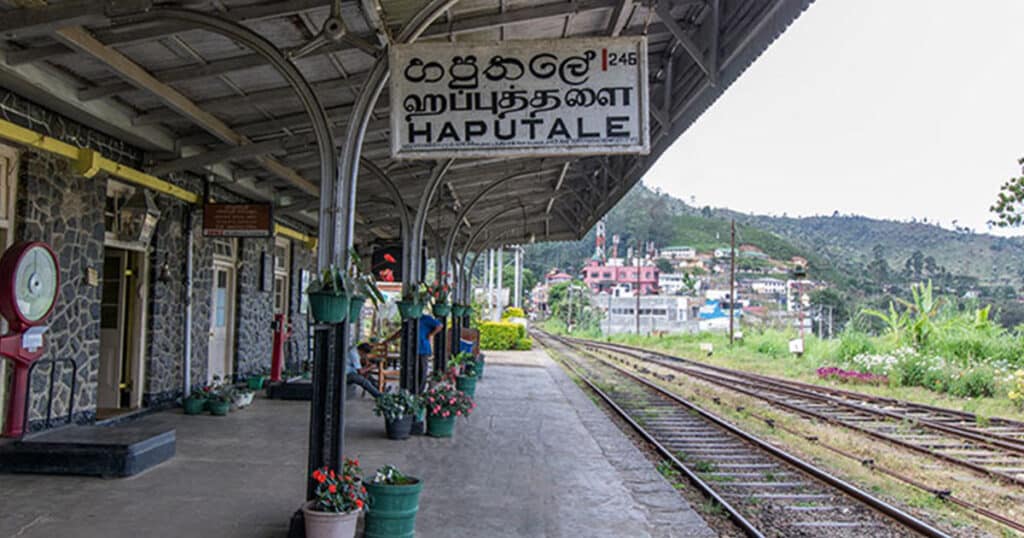
The 69th station on the Main Line is Haputale Railway Station. In Badulla District, Uva Province, the station lies halfway between Idalgashinna and Diyatalawa railway stations. It is located at an elevation of 1,479.57 m (4,854.2 ft) above sea level, 247.97 kilometers (154.08 mi) from Colombo Fort railway station.
Demodara railway station

Demodara railway station is 277.71 kilometers (172.56 mi) from Colombo and the third last stop on the Main Line. It’s 912.5 meters (2,994 feet) above sea level and 8 kilometers (5.0 miles) from Badulla, Uva Province’s capital. The station serves all trains on the Main Line, including the Podi Menike and Udarata Menike fast trains.
The ‘Demodara Loop,’ a spiral train line at this location, is the station’s most prominent feature. The train line crosses beneath the Demodara railway station, looping around the loop and emerging through a tunnel that runs directly beneath the station. The train loop is 900 meters (3,000 feet) long, while the tunnel is 320 meters (1,050 feet) long. It is thought to be the world’s only loop with a railway station located exactly over a tunnel at the spiral loop. Engineers and surveyors discovered that the elevation between the hills at Demodara was too much for the track to negotiate during the construction of the rail extension to Badulla, and with the Ceylon Government Railway’s maximum inclination allowed being one foot per 44 feet (1/44), an innovative track design had to be devised. According to legend, one of the engineers, Devapura Jayasena Wimalasurendra, was inspired after seeing a Kankany (supervisor) in a nearby tea estate undo and re-tie his Talappawa (turban).
Badulla railway station

Badulla is the final station on the Main Line, located 292.3 kilometers (181.6 miles) south of Colombo. It’s 652.43 meters (2,140.5 feet) above sea level and 1 kilometer (0.62 miles) from Badulla, Uva Province’s capital. The station serves as a terminus for trains on the Main Line, including the Podi Menike and Udarata Menike express trains.
Kandy railway station
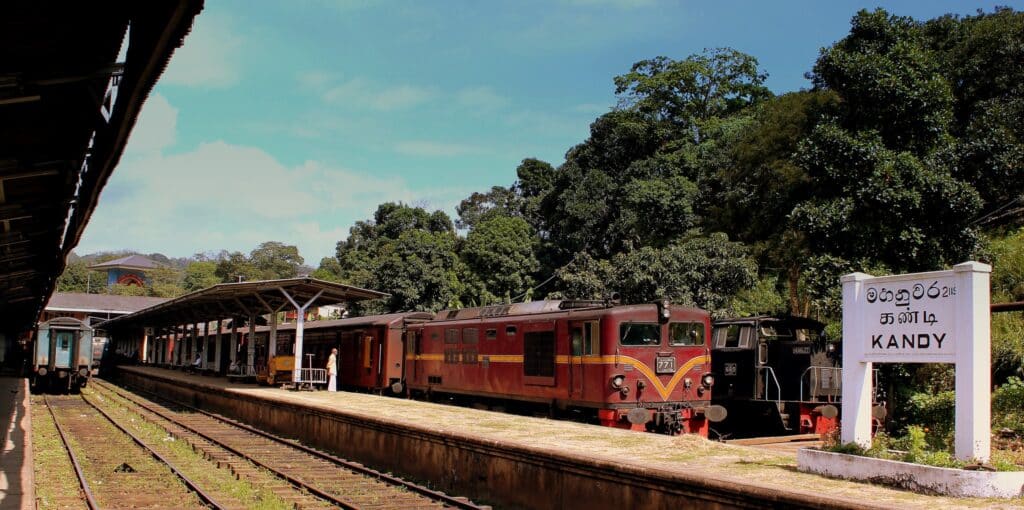
Kandy railway station is an important railway station in the Sri Lankan city of Kandy. Sri Lanka Railways serves the station, which is the main railway station in Kandy and one of the most important in the central hills. [requires citation] The station is located on the Matale Line, which is a branch of the Main Line. Both Modernist and Victorian architecture can be found at Kandy Railway Station. The station structure is designed in the Art Moderne style, with curved forms and sweeping horizontal lines. It creates a geometric form with concrete massing. Its plain, assertive lines and minimalist walls contrast sharply with the ornate, traditional building that surrounds it.
The platforms are protected by an earlier Victorian-style building. Elegant arches and elaborate craftsmanship adorn the edifice.
Matale railway station
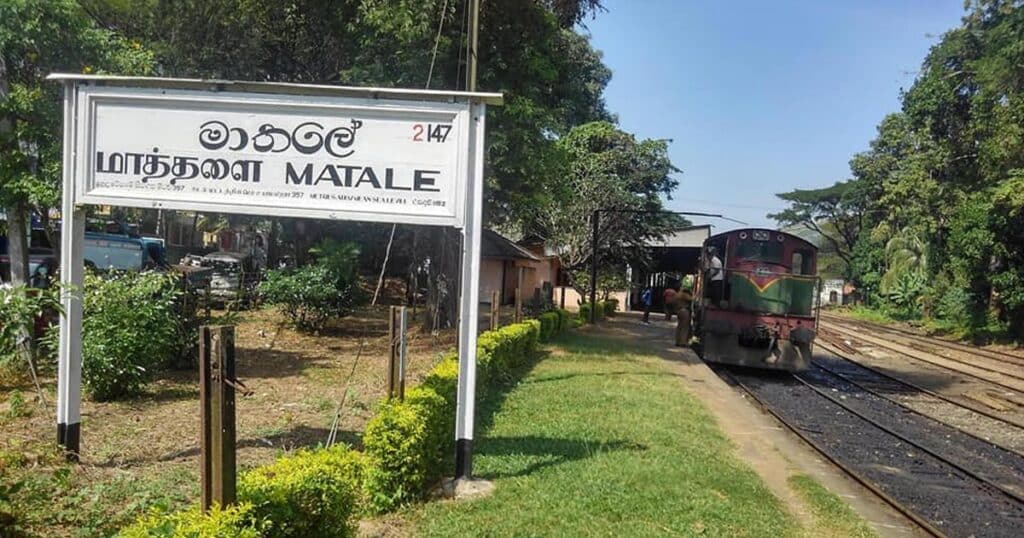
The Matale Railway Station is the final station on Sri Lanka’s Matale railway line. It is located in the Matale District in the Central Province, and is the 65th railway station on the line from Colombo Fort. The Colombo Fort Railway Station is 148.6 kilometers (92.3 miles) away, while the Kandy Railway Station is 27.64 kilometers (17.17 miles). Following the building of a branch line from Kandy to Matale, the station opened on October 14, 1880. Matale station is located around 700 meters (770 yards) east of Matale’s city center.
Ukuwela railway station

The Ukuwela Railway Station is located on Sri Lanka’s Matale railway line. It is located in the Matale District in the Central Province, and is the 65th railway station on the line from Colombo Fort. The Colombo Fort Railway Station is 141.6 kilometers (88.0 miles) away, while the Kandy Railway Station is 28 kilometers (17 miles).
Wattegama railway station

Wattegama Railway Station is a railway station in Sri Lanka located on the Matale railway line. It is located in the Kandy District of the Central Province, and is the 62nd railway station on the line from Colombo Fort. The Colombo Fort Railway Station is 133 kilometers (83 miles) away, whereas the Kandy Railway Station is 18.2 kilometers (11 miles). It was founded primarily to serve the area’s expanding number of cocoa and tea estates.
Kurunegala railway station

Kurunegala Railway Station is an important station in Sri Lanka’s North Western Province, located in the Kurunegala District. At an elevation of 122.86 meters (403.1 feet) above sea level, it is the 5th railway station on the Northern Line and the 39th altogether from the Colombo Fort Railway Station. Kurunegala’s town center is 2.2 kilometers (1.4 miles) away from the station.
The station acts as a terminal for multiple trains, with all Northern Line, Trincomalee Line, and Batticaloa Line trains stopping there; however, a handful of Intercity express trains do not stop there. To assist terminal train switching, the station includes one platform with several passing loops or sidings and a crossing loop.
Anuradhapura railway station

Anuradhapura Railway Station is a railway station in the Sri Lankan city of Anuradhapura. Sri Lanka Railways serves the station, with Northern Line services such as the Yal Devi stopping there. Anuradhapura is served by Northern Line trains. Colombo and Vavuniya are connected by train via Anuradhapura. Anuradhapura to Mihintale through Mihintale Junction is served by a small branch line operated by the railways.
Jaffna railway station

Jaffna railway station is located in the northern Sri Lankan city of Jaffna. The station, which is owned by Sri Lanka Railways, the country’s state-owned railway operator, is one of the busiest in the country, connecting the north with Colombo.
This station is served by the popular Yarl Devi service, which runs on the Northern Line. The station was severely damaged during the civil war in the late 1980s. By 1990, all train services on the Northern Line north of Vavuniya were ceased. The station was abandoned and suffered severe damage in the years that followed. Following the end of the civil war in 2009, the government embarked on a series of projects to rehabilitate the line and stations. On October 13, 2014, the Northern Line between Pallai and Jaffna reopened.
Trincomalee railway station
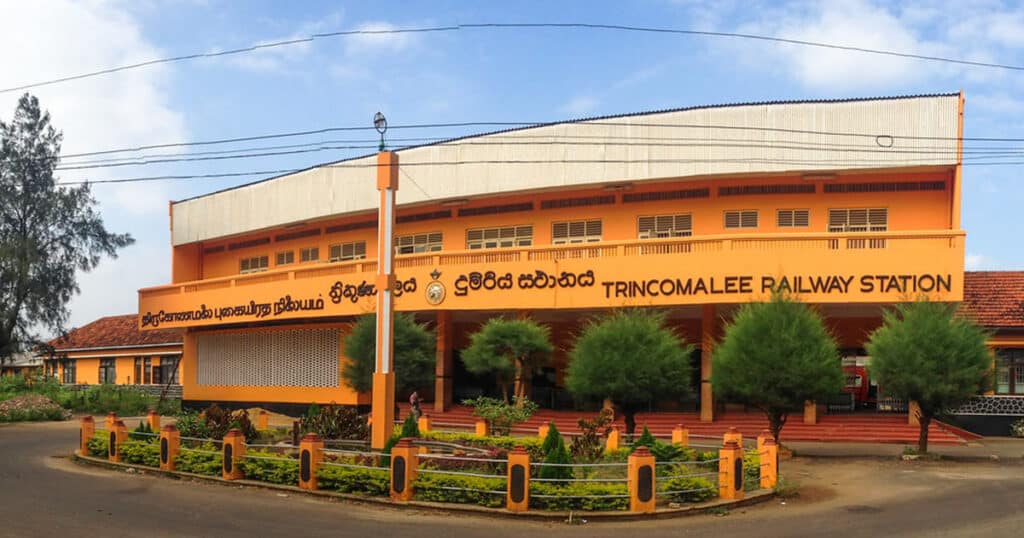
Trincomalee railway station is located in the eastern Sri Lankan city of Trincomalee. The station is the eastern terminal of the Trincomalee Line, which connects Trincomalee District with the capital Colombo and is owned by Sri Lanka Railways, the state-owned railway operator. Along parts of the Trincomalee, Batticaloa, Northern, and Main Lines, intercity trains run from Trincomalee station, connecting Trincomalee with Colombo Fort and other places. Trincomalee also has a rail bus service that runs throughout the Eastern Province.

